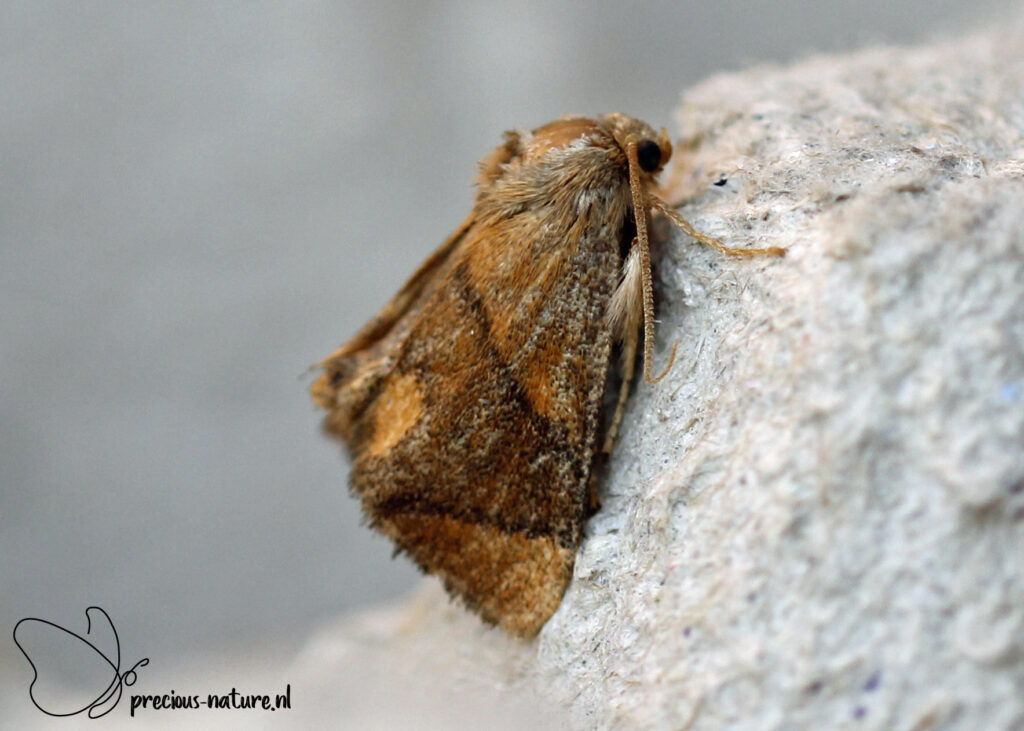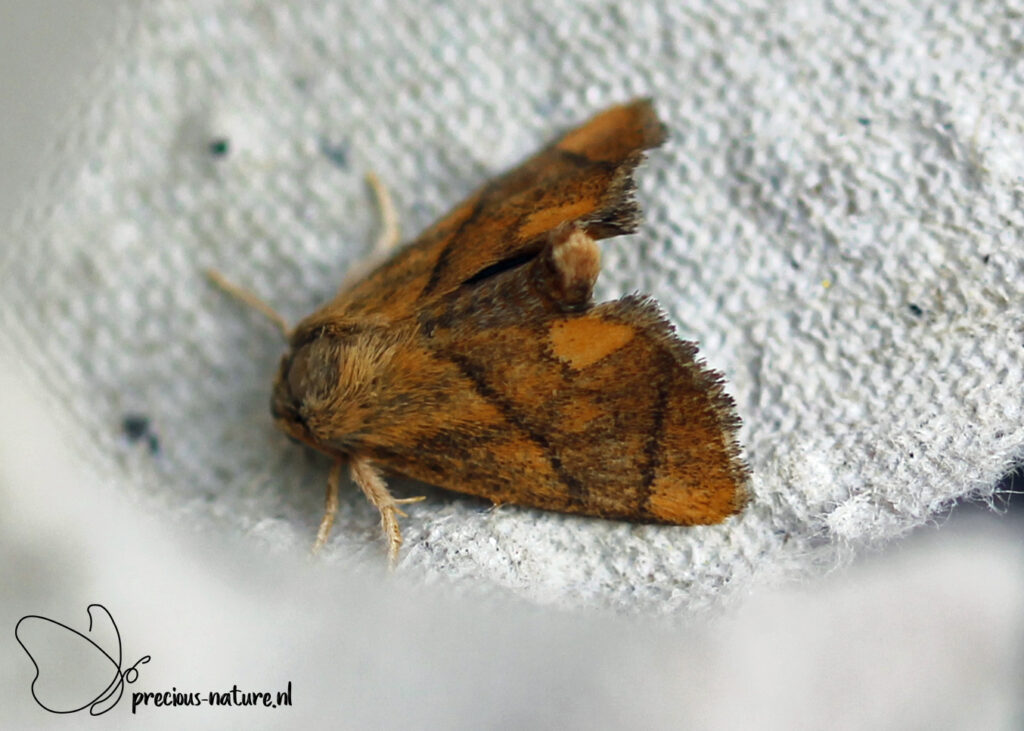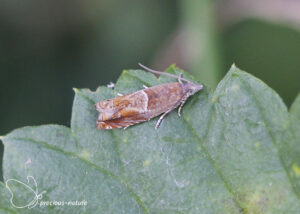Slag Caterpillar Moths (Limacodidae) occur worldwide, with approximately 1800 described species and many more undescribed. They are mainly found in the tropics. Only two species occur in the Netherlands, both of which are rather small and inconspicuous. The broad, rather rounded forewings and the roof-shaped resting position are characteristic of this family. The tongue is incompletely developed, and the moths cannot therefore absorb food. They are medium to medium-sized moths with sturdy, often hairy bodies and broad, rounded wings. Most are brown or yellowish with contrasting markings on the forewings. Adults have small heads, short labial palps, and short or absent maxillary palps and proboscis. Typical wingspan is 1.5-4.3 cm. Larvae can be naked or densely-haired and usually have stinging hairs. These caterpillars move like slugs and slide on their prolegs and suckers, which explains the name of this family. They feed on a variety of woody and herbaceous plants and overwinter in loose, oval cocoons.
Genus: Apoda
The Festoon – 2023 (BE)
(NCBI-index: 287200)
The advantage of using the moth trap in a different area is that it produces different species than I am used to finding in the north of the Netherlands. In addition to new butterflies, several new moths could also be added to my species list, including the Festoon (Apoda limacodes). The males are dark brown, and the females are yellow-brown. The curved transverse lines that diverge widely from the leading edge of the forewing are a good feature for identification. In some specimens, especially the male, the field between these two lines is extra dark except for one or two light spots in the inner edge corner and the centre of the field. When the Festoon is at rest, it folds its forewings upwards at a gentle angle with the wing tips resting on the surface. The male maintains his abdomen in a bent upward position when at rest. The flight period spans one generation, from late May to mid-August, and the wingspan measures 24-28 mm. Host plant: Oak. Dutch name: Slakrups. Frisian name: –
Flying period:







